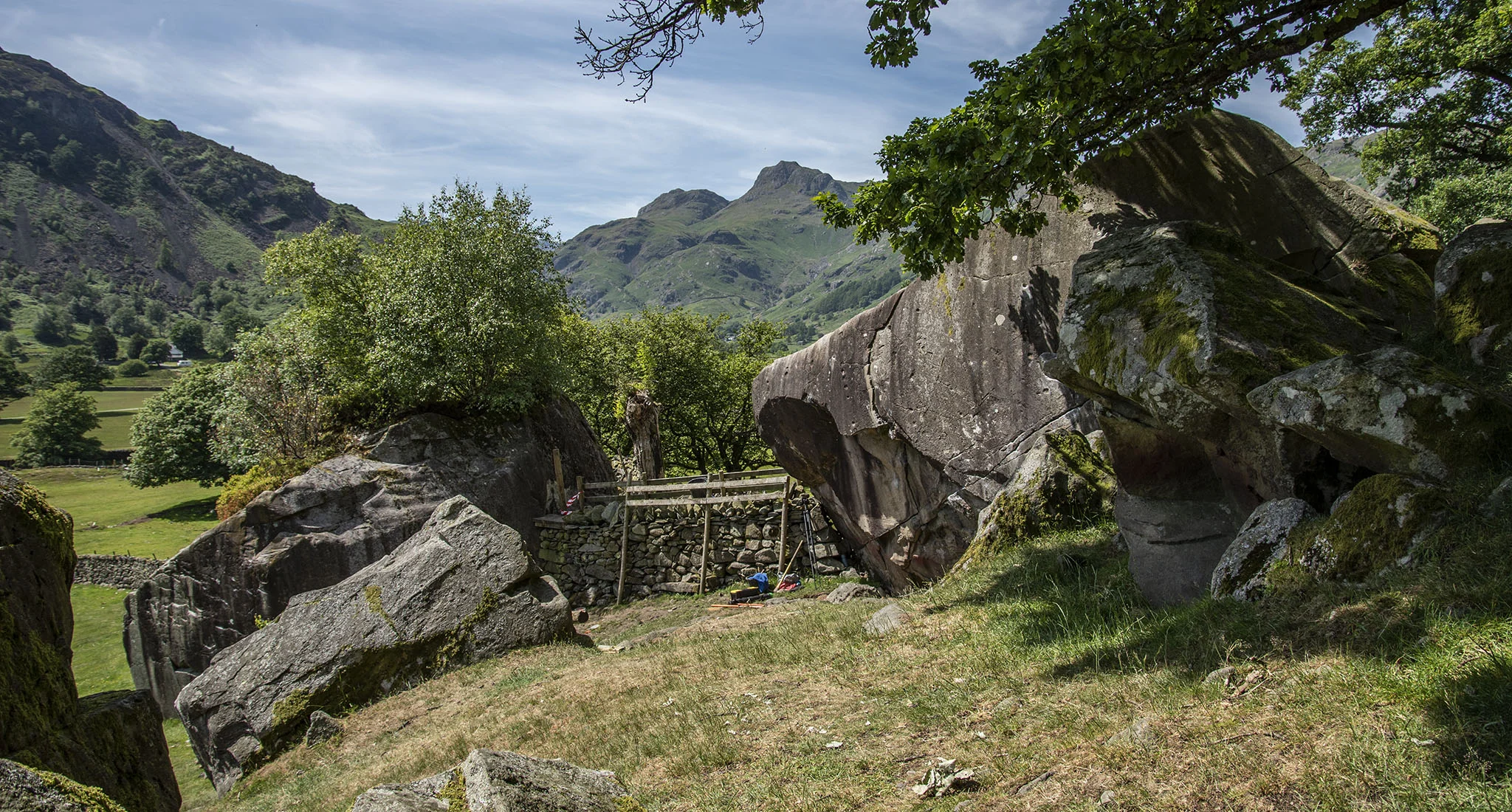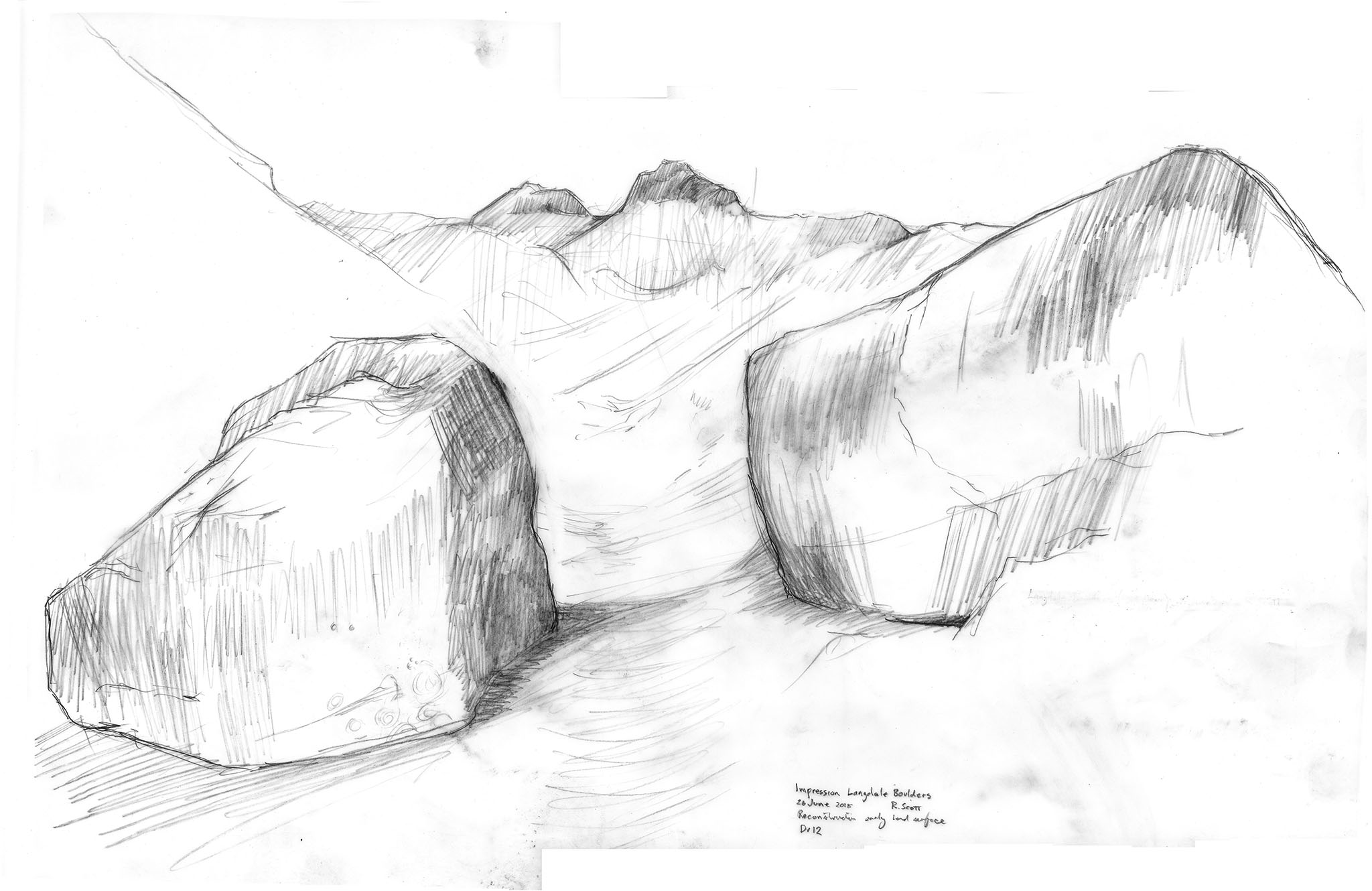Excavating at Copt Howe day 9: Recording and replicating
The weather continues sunny and dry. Ronnie is busy recording the features revealed within Trenches 1 and 3.
Above: Ronnie drawing Trench 3 (Photo: Aaron Watson, 2018)
With Trench 1 mostly resolved, Pete and I began to create rock art images upon fragments of rock removed from the trenches. At Torbhlaren, a rock art site I helped to excavate in the Kilmartin area of western Scotland, the act of experimentally making carvings had revealed powerful insights. These ranged from identifying the wear upon hammerstones to the colours, smells and sounds involved.
Above: Pete examines the wear patterns on a freshly used hammerstone (Photo: Aaron Watson, 2018)
Above: A short film featuring the experimental creation of rock art at Copt Howe (Video: Ronnie Scott and Aaron Watson / Edit: Aaron Watson)
Towards late morning, I set up a camera to record a time-lapse of sunlight moving across Rock 1. This time, Trench 1 has been fully excavated so all of the unrecorded carvings are fully visible.
Above: A time-lapse animation showing how the light and shadow move across the main panel of rock art (Photography / Edit: Aaron Watson, 2018)
Above: We are visited by Eleanor Kingston from the Lake District National Park (Photo: Aaron Watson, 2018)
Above: Pete assists Ronnie with drawing a section in Trench 1 (Photo: Aaron Watson, 2018)
One of the things we have realised over many years of fieldwork is that the more time we spend working in a place, the more insights we have about it. Copt Howe was no exception, including an interesting observation today by Richard. He noted how the general slope and profile of the Boulders (sloping down from right to left) resonates with the relative summit profiles of the Langdale Pikes beyond. This could not have been a deliberate creation, since both places are natural. But if we can observe this visual relationship, perhaps it could also have been noted by people in the past.
Above: The profile of the Boulders echoes that of the mountains beyond (Photo: Aaron Watson, 2018)
Ronnie made a quick sketch of the Boulders and the mountains, taking into account the level of the Neolithic land surface revealed by our trenches. This emphasised the passage, or portal, which divides the two stones.
Above: Ronnie's sketch of the Boulders and the Pikes (Pencil drawing: Ronnie Scott, 2018)
The excavations at Copt Howe were directed by Richard Bradley and Aaron Watson. Many thanks to Yvonne Luke, Diane O'Leary, Nick Russell, Ronnie Scott, Kate Sharpe, Moyra Simon, Peter Style, Sally Taylor and Emma Watson for helping us with the fieldwork.
Thanks also to Historic England for granting permission for us to work at this scheduled monument, and to the National Trust for their support throughout. The excavations were funded by the Prehistoric Society and the Royal Archaeological Institute.
I will update my website with further information as the analysis and interpretation of the excavation continues.





